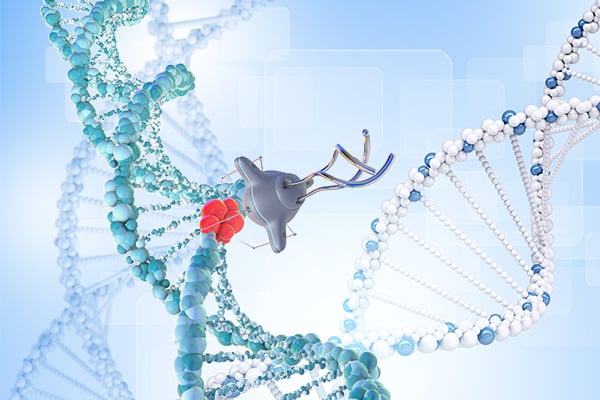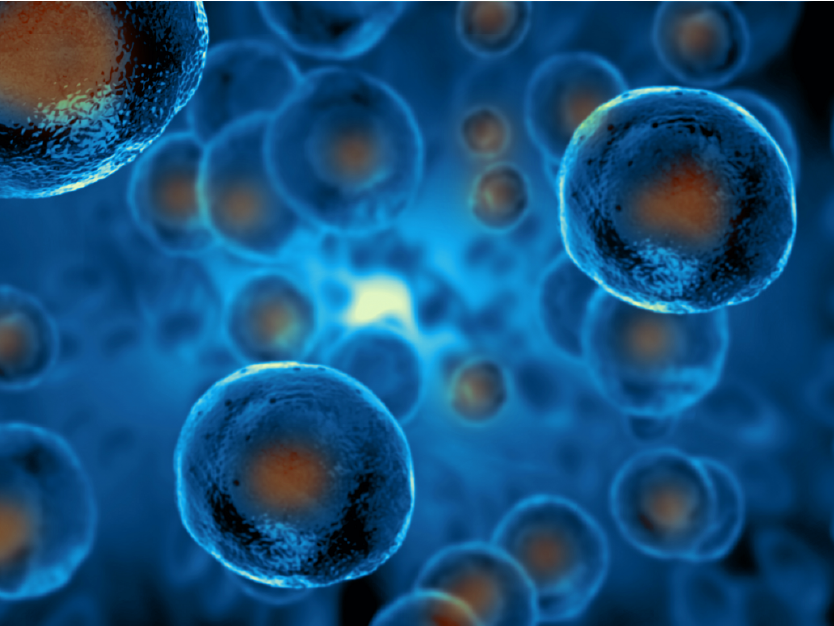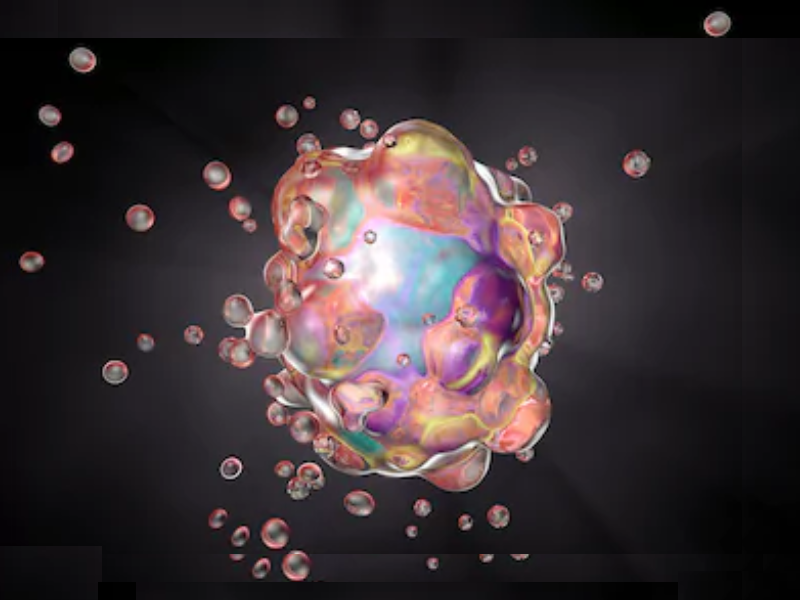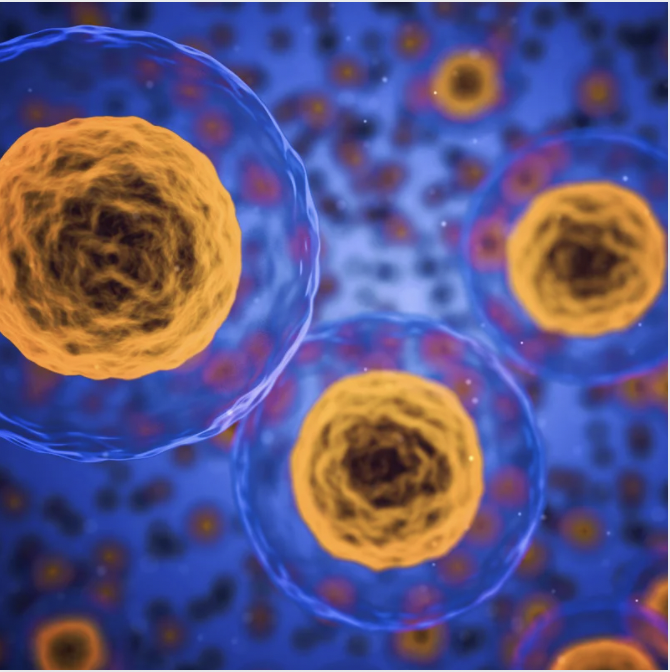Since DNA was first discovered by researchers, decades of work have been done to understand its importance as it is the code of life itself. While DNA is the cornerstone of life, it is not immune to damages, and as so it is vital for DNA to repair itself for normal cell function to be maintained. Though, DNA is not always able to repair itself and this leads to some diseases such as various cancers. Fortunately, DNA repair pathways are capable of being tools to provide therapies to combat these diseases.

Introduction to DNA Damage and Repair
Over the course of one day within the human body, there are thousands of instances of DNA damage that are the result of both endogenous and exogenous factors. Some examples of exogenous reasons for DNA damage are ultraviolet (UV) radiation from the sun and the chemicals from tobacco in cigarette smoke. On the other hand, endogenous DNA damage can occur from metabolic processes within the body. For example, one metabolic process can produce reactive oxygen which can damage DNA.
When enough DNA is damaged, apoptosis, a form of programmed cell death, can occur. Though, when there is no apoptotic control, DNA damage may result in cancer. An example of this is skin cancer which is caused by overexposure to UV rays from the sun, tanning beds, or sunlamps. In the short term, this damage can cause a sunburn but, over time, UV damage adds up. This leads to changes in skin texture, premature skin aging, and even skin cancer.
For these reasons, it is necessary to have a repair system for DNA. For as often as DNA damage is happening throughout the body, so is DNA repair. Some repair pathways repair double stranded DNA breaks, which is when both strands of the DNA have damage at the same location. Other repair pathways repair single stranded breaks, where only one DNA strand has missing or incorrect nucleotide(s).
Types of DNA Repair
Double stranded break repair:
- HR: Homologous repair
- In HR, the homologous chromosome is used as a template to fix the damage. This pathway features the BRCA family.
- NHEJ: Non-homologous end joining
- In NHEJ, the broken DNA strands are reconnected without any attempt to replace what was previously there.
Single stranded break repair:
- BER: base excision repair
- In BER, the single stranded DNA break is fixed using the complementary DNA strand as a template. This pathway features the PARP family.
- NER: Nucleotide excision repair
- The NER pathway also repairs single stranded DNA breaks by using the complementary DNA, however it repairs damage caused by ultraviolet light.
- MMR: DNA mismatch repair
- MMR fixes incorrect nucleotide pairings in the DNA.
Cancer Treatment Using DNA Repair Pathways: PARP Inhibitors
BRCA1 and BRCA2 are important in homologous repair, and when they are mutated, cells can become cancerous. While the rate of breast cancer for women without BRCA1 or 2 mutations is 13%, a BRCA1 or 2 mutation increases the likelihood of developing breast cancer up to 45-72%.
When a cell loses its ability to undergo homologous repair and becomes cancerous, base excision repair (BER) becomes its primary method of DNA repair. Although there are other repair pathways, they are less reliable and more error prone. Therefore, if the BER pathway is inhibited, the BRCA-deficient cancer cell will not have a reliable repair system, and it will accumulate DNA damage that will trigger cell death.
One way to inhibit the BER pathway is through targeting a protein called PARP (poly-ADP ribose polymerase) which plays a vital role in BER. This can be done using a PARP inhibitor, which binds to PARP when it is on DNA to stop it from performing its function. PARP inhibitors are small molecules, and there are several currently on the market, such as olaparib, rucaparib, and talazoparib. The inhibition of PARP when it is bound to DNA will not only prevent single stranded DNA breaks from being fixed, but, it also causes PARP to be trapped on the DNA. Then, if the cell tries to replicate its DNA, the trapped PARP protein will be in the way, and a double stranded break will occur. This will drastically speed up the occurrence of DNA damage, and apoptosis of the cancer cell will occur. There are many other potential targets to utilize DNA repair pathways as cancer therapies.
Conclusion
Since DNA damage occurs constantly, it is vital for our cells to have a reliable DNA repair response. However, there are times when blocking a form of DNA repair is beneficial, such as when targeting certain types of cancer cells.
ABclonal offers a variety of antibodies, proteins, and ELISA kits covering DNA damage and repair. We have currently over 150 related antibodies with multiple applications in our inventory. ABclonal is committed to continued development of additional products involved in DNA damage and repair to meet the growing market demand.
Available Antibodies for DNA Damage and Repair Research
| DNA Damage Sensors | ||||
|
Target Name |
Cat.No. |
Product Name |
Applications |
Reactivity |
|
Mre11 |
Mre11 Rabbit mAb |
WB |
Human Mouse |
|
|
MRE11A Rabbit pAb |
WB IF IP |
Human Mouse Rat |
||
|
Rad50 |
Rad50 Rabbit mAb |
WB |
Human Mouse Rat |
|
|
RAD50 Rabbit pAb |
WB IHC IF IP |
Human Mouse Rat |
||
|
RAD50 Rabbit pAb |
WB IHC IF |
Human Mouse |
||
|
Nbs1 |
[KO Validated] NBN Rabbit pAb |
WB |
Human Mouse |
|
|
p95/NBS1 Rabbit mAb |
WB |
Human |
||
|
Ku70 |
Ku70 Rabbit mAb |
WB IHC IF |
Human Mouse |
|
|
KU70 Rabbit pAb |
WB IHC IF IP |
Human Mouse Rat |
||
|
KU70 Rabbit pAb |
WB IHC IF |
Human Mouse Rat |
||
|
Ku80 |
Ku80 Rabbit mAb |
WB IHC IF |
Human |
|
|
XRCC5 Rabbit pAb |
WB IHC IF IP |
Human Mouse Rat |
||
|
RPA |
RPA1 Rabbit pAb |
WB IF IP |
Human, Mouse |
|
|
RPA2 Rabbit pAb |
WB IHC IF IP |
Human, Mouse, Rat |
||
|
RPA3 Rabbit pAb |
WB IF |
Human, Mouse, Rat |
||
|
Rad9 |
RAD9A Rabbit pAb |
WB IHC IF |
Human Rat |
|
|
Rad1 |
RAD1 Rabbit pAb |
WB |
Human Mouse |
|
|
Hus1 |
HUS1 Rabbit pAb |
WB IF IP |
Human Mouse |
|
|
HUS1 Rabbit pAb |
WB IHC IF |
Human Mouse Rat |
||
|
H2A.X |
Histone H2A.X Rabbit mAb |
WB IHC |
Human Mouse Rat |
|
|
Histone H2AX Rabbit pAb |
WB IHC IF |
Human Mouse Rat |
||
|
Histone H2AX Rabbit pAb |
WB IF IP |
Human Mouse Rat |
||
|
Phospho-γH2A.X-S139 Rabbit pAb |
WB IHC IF |
Human Mouse Rat |
||
|
|
Phospho-Histone H2AX-S139 Rabbit mAb |
WB IHC IF |
Human Mouse Rat |
|
|
DNA Damage Mediators |
||||
|
Target Name |
Cat.No. |
Product Name |
Applications |
Reactivity |
|
53BP1 |
53BP1 Rabbit pAb |
WB IHC IF |
Human Mouse Rat |
|
|
Claspin |
CLSPN Rabbit pAb |
WB |
Human |
|
|
Rad17 |
RAD17 Rabbit pAb |
WB IF IP |
Human |
|
|
BRCA1 |
BRCA1 Rabbit pAb |
WB IHC IF |
Human Mouse Rat |
|
|
BRCA1 Rabbit pAb |
WB IHC IF |
Human Mouse Rat |
||
|
Phospho-BRCA1-S1423 Rabbit pAb |
WB IHC IF |
Human Mouse Rat |
||
|
TopBP1 |
TOPBP1 Rabbit pAb |
WB IHC IF |
Human Mouse |
|
|
DNA Damage Signaling Kinases |
||||
|
Target Name |
Cat.No. |
Product Name |
Applications |
Reactivity |
|
ATM |
ATM Rabbit mAb |
WB IHC |
Human Mouse Rat |
|
|
Phospho-ATM-S1981 Rabbit pAb |
WB IF |
Human |
||
|
Phospho-ATM-S1981 Rabbit mAb |
WB |
Human |
||
|
ATR |
ATR Rabbit pAb |
WB |
Human |
|
|
Phospho-ATR-S428 Rabbit pAb |
WB IF |
Human Mouse |
||
|
ATRIP |
ATRIP Rabbit pAb |
WB IP |
Human Mouse |
|
|
ATRIP Rabbit pAb |
WB IF IP |
Human |
||
|
ATM/ATR substrate |
|
Phospho-(Ser/Thr) ATM/ATR Substrate Rabbit pAb |
WB |
ALL |
|
DNA-PK |
PRKDC Rabbit pAb |
WB IHC IF |
Human Mouse |
|
|
Cell Cycle Signaling Regulation |
||||
|
Target Name |
Cat.No. |
Product Name |
Applications |
Reactivity |
|
Chk1/2 |
CHEK1 Rabbit pAb |
WB IHC IF |
Human Mouse Rat |
|
|
Phospho-CHEK1-S280 Rabbit pAb |
WB IHC IF |
Human Mouse Rat |
||
|
Phospho-CHEK1-S345 Rabbit pAb |
WB |
Human Mouse Rat |
||
|
AP1047 |
Phospho-Chk1-S296 Rabbit mAb |
WB |
Human |
|
|
CHEK2 Rabbit pAb |
WB IHC IF IP |
Human Mouse |
||
|
CHEK2 Rabbit pAb |
WB IF |
Human |
||
|
Chk2 Rabbit mAb |
WB IHC |
Human |
||
|
Phospho-CHEK2-T68 Rabbit pAb |
WB |
Human |
||
|
Phospho-CHEK2-S516 Antibody kit |
|
|
||
|
Cdc25 |
CDC25A Rabbit pAb |
WB IHC IF |
Human Mouse Rat |
|
|
CDC25B Rabbit pAb |
WB |
Human |
||
|
CDC25C Rabbit pAb |
WB IF |
Human Mouse |
||
|
Phospho-cdc25C-S216 Rabbit pAb |
WB |
Human Rat |
||
|
CDK |
CDK1 Rabbit mAb |
WB IHC IF |
Human Mouse Rat |
|
|
CDK1 Rabbit pAb |
WB IHC IF |
Human Mouse Rat |
||
| Cell Cycle Signaling Regulation | ||||
| Target Name | Cat.No. | Product Name | Applications | Reactivity |
| Chk1/2 | A7653 | CHEK1 Rabbit pAb | WB IHC IF | Human Mouse Rat |
| AP0017 | Phospho-CHEK1-S280 Rabbit pAb | WB IHC IF | Human Mouse Rat | |
| AP0578 | Phospho-CHEK1-S345 Rabbit pAb | WB | Human Mouse Rat | |
| AP1047 | Phospho-Chk1-S296 Rabbit mAb | WB | Human | |
| A0466 | CHEK2 Rabbit pAb | WB IHC IF IP | Human Mouse | |
| A2145 | CHEK2 Rabbit pAb | WB IF | Human | |
| A19543 | Chk2 Rabbit mAb | WB IHC | Human | |
| AP0590 | Phospho-CHEK2-T68 Rabbit pAb | WB | Human | |
| RK05790 | Phospho-CHEK2-S516 Antibody kit | |||
| Cdc25 | A1173 | CDC25A Rabbit pAb | WB IHC IF | Human Mouse Rat |
| A0534 | CDC25B Rabbit pAb | WB | Human | |
| A11328 | CDC25C Rabbit pAb | WB IF | Human Mouse | |
| AP0577 | Phospho-cdc25C-S216 Rabbit pAb | WB | Human Rat | |
| CDK | A11420 | CDK1 Rabbit mAb | WB IHC IF | Human Mouse Rat |
| A0220 | CDK1 Rabbit pAb | WB IHC IF | Human Mouse Rat | |
| AP0016 | Phospho-CDK1-Y15 Rabbit pAb | WB IHC IF IP | Human Mouse Rat | |
| AP0324 | Phospho-CDK1-T161 Rabbit pAb | WB IHC IF IP | Human Mouse | |
| AP0015 | Phospho-CDK1-T14 Rabbit pAb | WB IF | Human Mouse Rat | |
| RK05747 | Phospho-CDK1-T161 Antibody kit | |||
| A0094 | CDK2 Rabbit mAb | WB | Human Mouse Rat | |
| AP1005 | Phospho-Cdk2-Y15 Rabbit mAb | WB | Human Mouse | |
| AP0325 | Phospho-CDK2-T160 Rabbit pAb | WB IHC | Human | |
| A11136 | [KO Validated] Cdk4 Rabbit mAb | WB IF | Human | |
| A0366 | CDK4 Rabbit pAb | WB IHC IF IP | Human Mouse Rat | |
| AP0593 | Phospho-CDK4-T172 Rabbit pAb | WB | Human Mouse Rat | |
| RK05753 | Phospho-CDK4-T172 Antibody kit | |||
| A19029 | CDK5 Rabbit mAb | WB | Human Mouse Rat | |
| A18080 | [KO Validated] CDK5 Rabbit pAb | WB IF | Human Mouse Rat | |
| A1545 | [KO Validated] CDK6 Rabbit pAb | WB IHC IF IP | Human Mouse | |
| A0106 | CDK6 Rabbit mAb | WB | Human Rat | |
| A12942 | CDK7 Rabbit pAb | WB IHC IF | Human Mouse Rat | |
| A9654 | Cdk8 Rabbit mAb | WB | Human Mouse Rat | |
| A11145 | Cdk9 Rabbit mAb | WB IHC IF IP | Human Mouse Rat | |
| A2690 | CDK10 Rabbit pAb | WB IHC IF | Human Mouse | |
| A12830 | CDK11B Rabbit pAb | WB IF | Human Mouse | |
| AP1138 | Phospho-CDK1/2/3-T14 Rabbit mAb | WB | Human Mouse Rat | |
| AP1001 | Phospho-Cdk1/2-T14 Rabbit mAb | WB | Human Mouse Rat | |
| Cyclin | A19036 | Cyclin A2 Rabbit mAb | WB IHC IF | Human Mouse Rat |
| A7632 | Cyclin A2 Rabbit pAb | WB IHC IF | Human Mouse Rat | |
| A19037 | [KO Validated] Cyclin B1 Rabbit mAb | WB | Human Mouse | |
| A16038 | Cyclin B1 Rabbit pAb | WB IHC IF IP | Human Mouse Rat | |
| A3351 | CCNB2 Rabbit pAb | WB IHC | Human Mouse Rat | |
| A19038 | [KO Validated] Cyclin D1 Rabbit mAb | WB IHC IF | Human Mouse Rat | |
| A11310 | Cyclin D1 Rabbit pAb | WB IP | Human Mouse Rat | |
| A1773 | Cyclin D2 Rabbit pAb | WB IHC IF | Human Mouse Rat | |
| A0746 | [KO Validated] CCND3 Rabbit pAb | WB | Human Mouse | |
| A3989 | Cyclin D3/CCND3 Rabbit mAb | WB | Human Mouse Rat | |
| A14225 | CCNE1 Rabbit pAb | WB | Human Mouse Rat | |
| A9305 | Cyclin E2 Rabbit mAb | WB | Human | |
| A4076 | Cyclin H Rabbit mAb | WB IHC IF | Human Mouse | |
| A0995 | CCNH Rabbit pAb | WB IP | Human | |
| p53 | A19585 | [KO Validated] p53 Rabbit mAb | WB | Human |
| A5761 | p53 Rabbit pAb | WB IHC IP ChIP | Human Mouse Rat | |
| A0263 | p53 Rabbit pAb | WB IHC IF ChIP | Human Rat | |
| A11232 | [KO Validated] p53 Rabbit pAb | WB IHC IF | Human Mouse Rat | |
| AP0985 | Phospho-p53-S9 Rabbit mAb | WB | Human Mouse | |
| AP0987 | Phospho-p53-S376 Rabbit mAb | WB | Human Rat | |
| AP0984 | Phospho-p53-S33 Rabbit mAb | WB | Human | |
| AP0986 | Phospho-p53-T55 Rabbit mAb | WB | Human | |
| AP0083 | Phospho-p53-S15 Rabbit pAb | WB IF IP | Human Mouse Rat | |
| AP0762 | Phospho-p53-S33 Rabbit pAb | WB IHC IP | Human Mouse Rat | |
| CKI | A19094 | [KO Validated] p21 Rabbit mAb | WB IHC | Human |
| A2691 | [KO Validated] P21 Rabbit pAb | WB IHC | Human Mouse Rat | |
| A1483 | p21 Rabbit pAb | WB IF | Human Mouse Rat | |
| A19095 | [KO Validated] p27 KIP 1 Rabbit mAb | WB IHC | Human Mouse Rat | |
| A0290 | CDKN1B Rabbit pAb | WB IHC IF | Human Mouse Rat | |
| A5685 | CDKN2B Rabbit pAb | WB | Human | |
| A11651 | Rabbit mAb | WB IHC IF | Human | |
| A0262 | CDKN2A / p16INK4a Rabbit pAb | WB IHC IF | Human Mouse Rat | |
| A6843 | p57 Kip2 Rabbit mAb | WB | Human Mouse Rat | |
| A8751 | CDKN2C Rabbit mAb | WB IF | Human Mouse Rat | |
| DNA Damage Repair Proteins | ||||
| Target Name | Cat.No. | Product Name | Applications | Reactivity |
| PARP | A19596 | [KO Validated] PARP Rabbit mAb | WB IHC | Human Mouse Rat |
| A19612 | Rabbit mAb | WB | Human Mouse | |
| A0942 | [KO Validated] PARP1 Rabbit pAb | WB IHC IF IP ChIP | Human Mouse Rat | |
| Ape1 | A11238 | APE1 Rabbit mAb | WB IHC | Human Mouse Rat |
| A2587 | [KO Validated] APEX1 Rabbit pAb | WB IF IP | Human | |
| XRCC1 | A4135 | XRCC1 Rabbit mAb | WB | Human Mouse Rat |
| A0442 | XRCC1 Rabbit pAb | WB IF | Human Mouse | |
| PCNA | A12427 | PCNA Rabbit mAb | WB IHC | Human Mouse Rat |
| A0264 | PCNA Rabbit pAb | WB IHC IF | Human Mouse Rat | |
| FEN-1 | A8999 | FEN1 Rabbit mAb | WB | Human Mouse |
| A1175 | FEN1 Rabbit pAb | WB IHC IF IP | Human Mouse | |
| XPA | A1626 | [KO Validated] XPA Rabbit pAb | WB IF | Human Mouse |
| XPB | A1714 | ERCC3 Rabbit pAb | WB IHC | Human Mouse |
| XPC | A8354 | XPC Rabbit pAb | WB IHC IP | Human |
| XPD | A14563 | ERCC2 Rabbit pAb | WB IF | Human Mouse Rat |
| XPF | A8119 | ERCC4 Rabbit pAb | WB IP | Human Mouse Rat |
| DDB | A5022 | DDB1 Rabbit mAb | WB | Human Mouse Rat |
| A2896 | DDB1 Rabbit pAb | WB IHC IF | Human Mouse Rat | |
| A11615 | DDB2 Rabbit mAb | WB | Human Mouse | |
| A1848 | DDB2 Rabbit pAb | WB IF | Human Mouse Rat | |
| ERCC1 | A5291 | ERCC1 Rabbit pAb | WB IF | Human Mouse |
| MSH2 | A8740 | MSH2 Rabbit mAb | WB | Human Mouse Rat |
| A1121 | MSH2 Rabbit pAb | WB IP | Human Mouse Rat | |
| MSH3 | A5681 | MSH3 Rabbit pAb | WB | Human |
| MLH1 | A4858 | MLH1 Rabbit mAb | WB | Human Mouse |
| MLH3 | A7796 | MLH3 Rabbit pAb | WB IF | Human |
| PMS1 | A2183 | PMS1 Rabbit pAb | WB | Human |
| PMS2 | A4577 | PMS2 Rabbit mAb | WB | Human |
| BRCA2 | A2435 | BRCA2 Rabbit pAb | WB IF | Human Rat |
| FANCD2 | A19692 | FANCD2 Rabbit mAb | WB | Human Mouse Rat |
| CtIP | A10201 | RBBP8 Rabbit pAb | WB | Human Mouse Rat |
| Rad51 | A6268 | RAD51 Rabbit pAb | WB | Human Mouse Rat |
| A2829 | Rad51 Rabbit mAb | WB | Human Mouse Rat | |
| Rad52 | A5186 | RAD52 Rabbit mAb | WB | Human |
| XLF | A19957 | [KO Validated] NHEJ1 Rabbit pAb | WB IHC IF | Human Mouse Rat |
References
Bernstein, C., Prasad, A.R., Nfonsam, V., and Bernstein, H. (May 22nd 2013). DNA Damage, DNA Repair and Cancer, New Research Directions in DNA Repair, Clark Chen, IntechOpen, DOI: 10.5772/53919. Available from: https://www.intechopen.com/chapters/43929.
BRCA gene Mutations: Cancer risk and genetic testing fact sheet. National Cancer Institute. (2020). https://www.cancer.gov/about-cancer/causes-prevention/genetics/brca-fact-sheet#r2.
Herceg, Z., and Wang, Z.-Q. (2001). Functions of poly(adp-ribose) polymerase (PARP) in DNA repair, genomic integrity and cell death. Mutation Research/Fundamental and Molecular Mechanisms of Mutagenesis, 477(1-2), 97–110. https://doi.org/10.1016/s0027-5107(01)00111-7.
Hoeijmakers, J. H. J. (2009). DNA Damage, Aging, and Cancer. The New England Journal of Medicine, 316(15). https://doi.org/10.1056/nejmra0804615.
Konecny, G. E., and Kristeleit, R. S. (2016). PARP inhibitors for BRCA1/2-mutated and sporadic ovarian cancer: Current practice and future directions. British Journal of Cancer, 115(10), 1157–1173. https://doi.org/10.1038/bjc.2016.311.
Kunkel, T. A., & Erie, D. A. (2005). DNA mismatch repair. Annual Review of Biochemistry, 74(1), 681–710. https://doi.org/10.1146/annurev.biochem.74.082803.133243
McCabe, N., Turner, N. C., Lord, C. J., Kluzek, K., Białkowska, A., Swift, S., Giavara, S., O'Connor, M. J., Tutt, A. N., Zdzienicka, M. Z., Smith, G. C. M., & Ashworth, A. (2006). Deficiency in the repair of dna damage by homologous recombination and sensitivity to poly(adp-ribose) polymerase inhibition. Cancer Research, 66(16), 8109–8115. https://doi.org/10.1158/0008-5472.can-06-0140.




